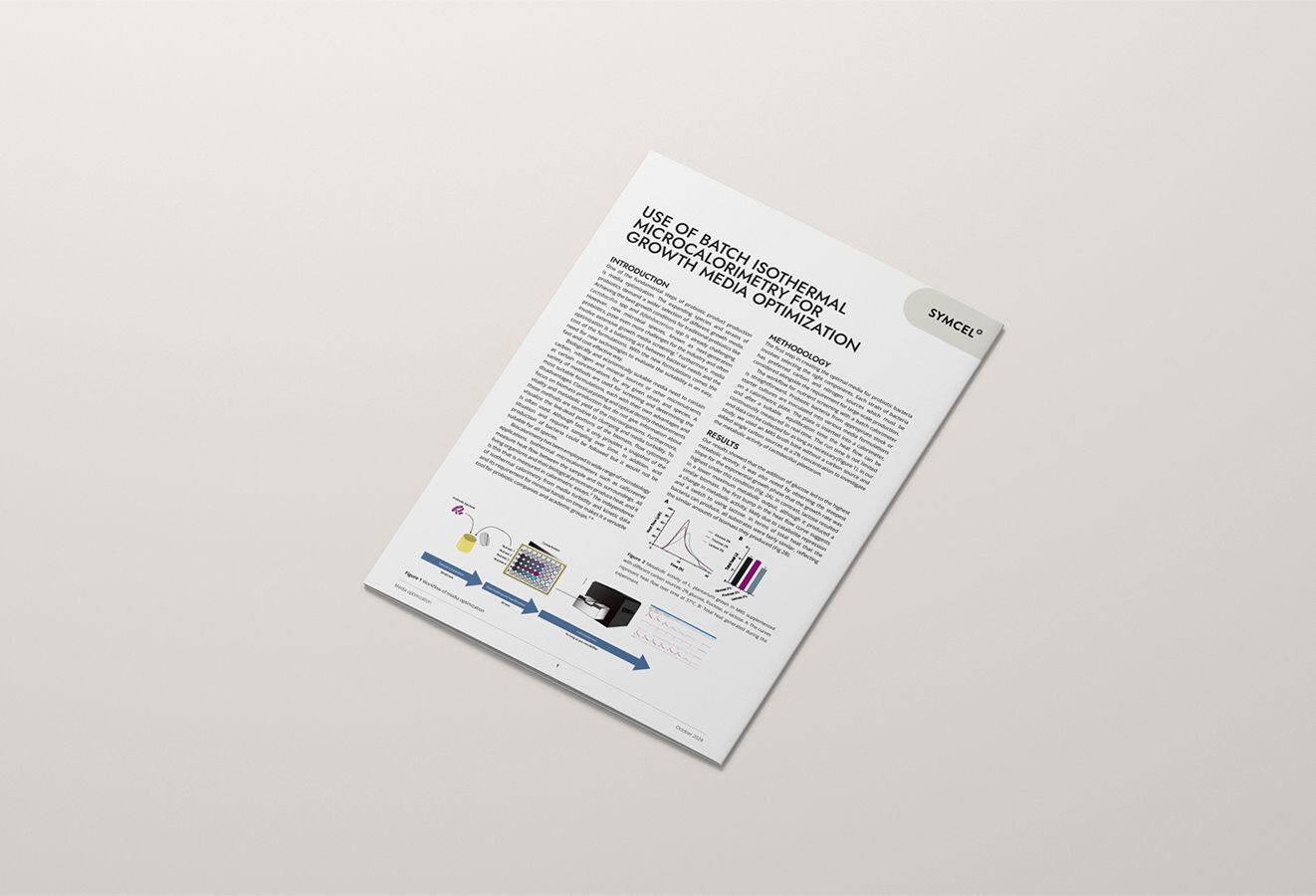- Home >
- Knowledge Hub >
- Application Notes
Application
Notes

1st December 2025
In Situ Analysis of Surface-Attached Biofilm Using Microcalorimetry
This application note presents a standardized method for measuring in situ biofilm metabolism using isothermal microcalorimetry combined with the BioSurface Technologies MicroWell™ system.

20th November 2025
Rapid Microbial Detection in Skincare Products via Isothermal Microcalorimetry
For the cosmetics industry, balancing safety, quality, and natural formulation is a constant challenge. In collaboration with Bunnyroo Inc., the application note demonstrates how biocalorimetry enables rapid and sensitive detection of microbial contamination in skincare products such as face serum and collagen cream.

20th November 2025
Wound in a cup – Isothermal microcalorimetry and chronic wound medium for a wound model
Chronic wounds are driven by resilient biofilms that standard lab models often fail to capture, risking overestimation of antibiotic efficacy. Using chronic wound medium with Symcel’s isothermal microcalorimetry, this application note reveals hidden drug tolerance and showcases how the calScreener offers a powerful tool for developing effective therapies.

18th September 2025
Accelerating microbial detection in consumer goods using rapid sterility testing
Biocalorimetry enables rapid and highly sensitive microbial detection in consumer goods, overcoming the long delays and limitations of traditional culture-based sterility tests. By measuring microbial metabolic heat in real time, the calScreener® can confirm contamination within hours, even in complex formulations such as hand wash, shower cream, and toothpaste. This approach reduces production risks, improves quality control efficiency, and supports faster, more reliable release of safe consumer products.

27th September 2024
Innovative model systems for CF-related biofilm research using Symcel calScreener™ and synthetic CF sputum media
This application note outlines the use of the Symcel calScreener™ in combination with Synthetic CF Sputum Media (SCFM) to model cystic fibrosis-related biofilms. This approach provides real-time, in situ analysis of biofilm kinetics, offering insights into treatment efficacy under clinically relevant conditions, and addressing limitations of conventional biofilm models.

27th September 2024
Advancements in food safety: Isothermal microcalorimetry for detecting bacterial spoilage in minced checken
This study explores the use of isothermal microcalorimetry to detect bacterial spoilage in minced chicken meat. The method allows for real-time, direct measurement of microbial metabolic activity, distinguishing between fresh and spoiled meat based on microbial load. The findings demonstrate the sensitivity of this approach, including the detection of low-level contamination by Salmonella enterica.

27th September 2024
Use of batch isothermal microcalorimetry for growth media optimization
This study presents the use of isothermal microcalorimetry for optimizing growth media in probiotic development. By continuously measuring metabolic heat flow, this approach allows real-time assessment of microbial activity under various media conditions, offering insights into growth rates and metabolic yield. The method provides an efficient and precise alternative to traditional biomass-focused techniques, facilitating the development of cost-effective, optimized media formulations.

27th September 2024
Revolutionizing biofilm prevention: Microcalorimetric analysis of antimicrobial coatings and materials
This study highlights the use of isothermal microcalorimetry to evaluate antimicrobial coatings and materials. By measuring real-time heat flow associated with bacterial metabolism, this method provides insights into bacterial attachment, antimicrobial compound leaching, and contact-dependent bacterial killing. The technique offers a precise and efficient approach to assessing the antimicrobial properties of materials under conditions that simulate real-world applications, such as medical devices and industrial surfaces.